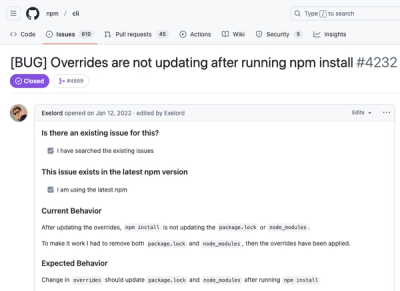Hique


 hique is a job queue for NodeJS.
hique is a job queue for NodeJS.
feel free to contribute / open issues / create pull requests / fork
Introduction
hique is heavily inspired by kue and bee-queue, and after using both frameworks pretty extensively I found that, though very well written, these frameworks do not fulfill two of my most desired aspects in:
hique was designed with these in mind.
Stability
hique differs from most frameworks by sacrificing a bit of performance to gain a much more stable environment, even when scaled up on different machines.
Scalability
To scale hique to available cpus / machines, simply create a NodeJS process with a hique worker pointing to the same monitor object as every other worker and voila! scaling done easy.
Installation
NPM
npm install hique
GitHub
npm install git+https://github.com/patriceperez/hique.git
Getting Started
Here is a simple example on how to set up a basic worker and a few jobs for testing
var hq = require('../lib/hique');
var monitor = new hq.Monitor();
var worker = new hq.Worker();
monitor.start();
worker.process('testJob', 5, function (job, done) {
console.log('executed job %s with data %s', job.id, JSON.stringify(job.data));
job.reportProgress(1, 1);
done(null, job.data.test);
});
for (var i = 0; i < 13; i++) {
worker.createJob('testJob', {test: i}, function (job) {
console.log('save new job %s and data %s', job.id, JSON.stringify(job.data));
});
}
worker.start();
check out the examples folder for more use cases
API Reference
Table of Contents
Worker
Configuration
Default configuration for workers
{
job: {
ttl: 5 * 60 * 1000
},
cleanUp: {
active: true,
refreshRate: 5 * 60 * 1000
},
refreshRate: 1000,
monitor: {
host: 'http://127.0.0.1',
port: '3001'
}
}
Any value can be overridden by providing a new value via the worker constructor:
new Worker({refreshRate: 2000})
| job.ttl | maximum time allowed (in milliseconds) for a job to stay active |
| cleanUp.active | should the cleanup process remove outdated data from the data store |
| cleanUp.refreshRate | interval (in milliseconds) between cleanup iterations |
| refreshRate | interval (in milliseconds) between job updates fetching in the data store |
| monitor.host | the host of the coordinating data store |
| monitor.port | the port the data store is listening on |
Processing Jobs
Process a new job type
worker.process(type, concurrency, function(job, done){
done(error, result);
});
| type | string literal representing the job type |
| concurrency (optional) | integer representing the amount of concurrent jobs the worker can handle simultaneously |
Creating Jobs
Create a new job
worker.createJob(type, data, function(job){
});
| type | string literal representing the job type |
| data | JSON object providing data to the job execution function |
Pause
Pause the worker from handling any new work
worker.pause();
Resume
Resume the worker to handle any new work
worker.start();
Get Existing Job
Get an existing job from redis with its current state
worker.getJob(type, id, function(job){
});
| type | string literal represnting the job type |
| id | integer representing the job id |
Get Completed Job Result
Get a completed job's result
worker.getJobResult(type, id, function(result){
});
| type | string literal representing the job type |
| id | integer representing the job id |
Get System Stats
Get an overview of each job type and its status (active, pending, etc...)
worker.getStats(function(stats){
});
Job
Job functions are available within the processing function, and can be used freely inside a worker.process() function
Report Progress
Report and save the current progress of the job
job.reportProgress(step, total);
| step | integer representing the current step progress from the total |
| total | integer representing the total amount of progress steps in the job |
example: job.reportProgress(5,10) will result in 50% progress for the job
Add Child
Add a child job to the current job
job.addChild(job);
| job | a live Job object, usually gathered from a worker.getJob() or worker.createJob() functions |
Wait For Child Jobs
Gather data from child jobs, previously added via job.addChild()
job.waitForChildren(function(){
});
- usually when delegating to child jobs, one would want to keep the parent alive untill all the children are done, in which case a
done() can be called inside the job.waitForChildren() callbac
Testing
After cloning the repo and resolving dependencies via npm install, run
npm test
Monitoring
Data Store
hique saves all data in-memory by default. (using the 'native' adapter)
Data is stored inside the data store through an adapter object, which is highly extensible, allowing adapters be written for other data stores (mysql, mongo, redis, etc`) fairly easily
Native - In Memory
The native adapter saves all data in-memory in the javascript's heap.
Since the heap is limited to about 1.2G by default (per process) it can be switched to any other adapter.
Creating Your Own Data Store
In order to create your own data store please follow these simple steps:
- Add a javascript file under the
lib/adapters directory
- Copy the code from
stub.js in order to get the interface of all adapters
- Implement all functions (refer to the
native.js for more details about how to invoke the correct data in callbacks)
- Add any default configuration values to
config/default.js under the adapter key to be passed at initialization, this will allow to pass a config object at runtime for specific hosts, ports, etc`
- If you have written an adapter, Don`t be shy! - share it with everyone here, programmers will get an additional way to use hique, and you will gain the power of the masses in discovering bugs and issues



